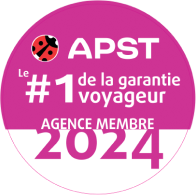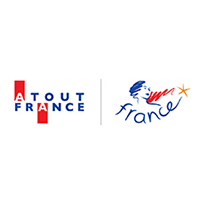Cambodia
Kep is a municipality that also holds provincial status. It is one of Cambodia’s most popular and prestigious seaside resorts. With its scenic coastal beaches and timeless pace of life, the city exudes both tranquility and renewal. Nature lovers, adventure seekers, and fans of tropical vibes alike will find plenty to enjoy during a trip to Kep, where the beauty of Khmer landscapes reveals itself at every turn.
History
Formerly known as Kep-sur-Mer, the town was founded in 1908 during the French Protectorate. At the time, it served as a popular holiday retreat for French and Cambodian elites. In the 1960s, plans were made to renovate the town and develop it into a modern beach resort. Prince Norodom Sihanouk later attempted to expand this project by initiating the construction of a golf course.
Under Khmer Rouge rule, Kep experienced a period of great hardship. Many colonial houses and French villas were destroyed or abandoned during the conflict.
Geography
Kep lies 173 kilometers southwest of Phnom Penh and just 25 kilometers from Kampot. It is also located near Ha Tien, a border crossing between Cambodia and Vietnam. Spanning over 336 km², the province features landscapes dominated by agricultural plantations.
Today
Kep’s economy is primarily driven by local resources from both land and sea. Agriculture remains the main occupation for most of its inhabitants. The town is part of the Kampot pepper growing region and also benefits from rich marine biodiversity. Fishing plays an important economic role, with fishermen making up over 4% of the active population. The coastal waters are especially renowned for blue crabs, which are found in abundance, along with squid, shrimp, and various fish. For seafood lovers, Kep is a true paradise.
With an average population density of 119 inhabitants per km², Kep had an estimated population of just over 40,000 in 2009. The locals are known for their kindness and hospitality, leading a simple and modest lifestyle.
In recent years, the city has begun to develop its tourism sector. By 2015, over 80 hotels and numerous bungalows had been established. Amid its tranquil and rustic atmosphere, Kep offers visitors the chance to immerse themselves in Khmer culture, marvel at the surrounding natural beauty, and enjoy a wide range of local attractions.
Colonial houses
Although many colonial-era homes were destroyed during the civil war by the Khmer Rouge, the ruins of over a hundred abandoned villas still remain. These structures stand as a testament to the architectural legacy and once-prosperous era of the town.
The Beach
Kep’s beaches stretch for over 100 meters and are composed of a mix of mangrove, black rocks, and soft white sand similar to that of Sihanoukville. The main beach is located near Rabbit Island (Koh Tonsay). Beneath Kep’s blue skies, the gentle waves, fine sand, and azure sea quickly charm passing travelers. The water is shallow with a gentle slope, making it perfect for a stroll or a swim. While relatively quiet during the week, the beach becomes crowded on weekends. Behind the beach, seafood vendors and restaurants line the roadside. After a refreshing swim or walk, indulging in fresh seafood is a must-do activity.
Kep National Park
Kep National Park is one of the city's most famous attractions. Well maintained and easily accessible, it features clear signage guiding visitors to various points of interest. Many tourists come to explore the park and witness the sunset over the lush forest. Along the 8-kilometer trail, visitors discover the region’s rich biodiversity.
Blue Crabs
Kep is, above all, a fishing town. At its entrance stands a statue of a woman waiting for her husband to return from the sea—a symbol of its maritime identity. Kep is especially famous for its blue crabs, with a large statue of one displayed along the coastline. A local delicacy, the blue crabs are often served fried and accompanied by Kampot pepper sauce. The town’s crab market, known as Phsar Kdam, is a hub for seafood lovers, featuring many restaurants and live cooking stations. Watching the crabs being cooked fresh from the sea is a delightful experience, and the taste is just as rewarding.
Koh Tonsay (Rabbit Island)
Koh Tonsay, or Rabbit Island, is a small coastal island off Kep’s shores. From the beach, visitors can take a boat tour to the island or venture into the mangroves to explore its biodiversity. The island features affordable bungalows that offer spectacular views of the sea. For those with a spirit of adventure, limestone caves—some of which are sacred shrines—await exploration.
Climate
Kep enjoys a hot and humid tropical climate with a very short dry season. During the monsoon months, rainfall is heavy, with annual precipitation averaging 2,188 mm. The average temperature is 27°C, with lows around 16°C.
How to get there
By Bus
Located 25 kilometers from Kampot, Kep is accessible via National Road No. 3. Buses connect the two cities in about 20 to 40 minutes along this paved road. From Phnom Penh, several bus and minivan companies operate regular routes to Kep.
By Moto-Taxi
From Ha Tien in Vietnam, Kep can be reached via moto-taxi transport services.
Getting around
Tuk-Tuks
Kep is well-served by tuk-tuks, which are the most common mode of local transportation.
Bicycles and Motorbikes
It is also very easy and common to rent a bicycle or motorbike in Kep. These can be found throughout the town, and some travel agencies offer rentals for countryside excursions.
What to do in Kep?
- Visit the colonial houses and relive the city’s historic past
- Enjoy the tropical ambiance with a walk along the beach
- Sample the region’s famous blue crabs

